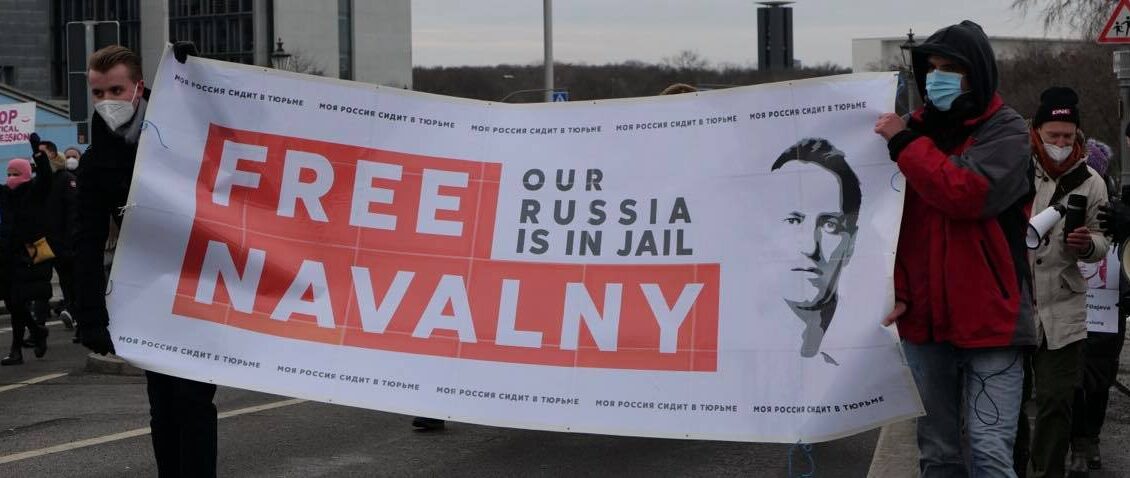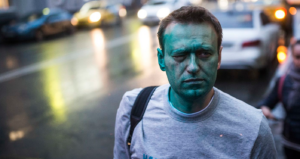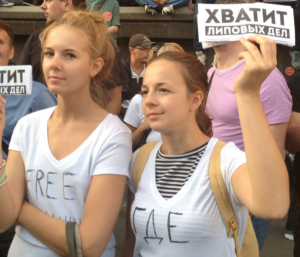Alexei Navalny: Vladimir Putin’s Biggest Fear
An exploration of Putin's violation of democracy

Alexei Navalny is Russian President Vladimir Putin’s loudest and most prominent critic in Russia’s contemporary political landscape. Though he has called out the Russian government for a multitude of issues, Navalny’s biggest problem with the Putin regime is corruption — specifically that which is present among the upper echelons of the Russian government. For this activism, Navalny has often been the target of alleged attacks by the Russian government against his campaigns and Navalny himself. For example, when Navalny opened his campaign office in Barnaul, Siberia, in preparation for his 2012 campaign against Putin, he was doused with green antiseptic. This was the first time Navalny was targeted with the “Zelyonka attack,” but the second one, which occurred months later, rendered him partially blind in his right eye.

The latest physical attack against Navalny, however, has proven its deadly potential. In August 2020, Navalny collapsed on a plane in Russia and was transported to Germany for treatment after being poisoned with Novichok, a deteriorating nerve agent supposedly used by the Russian military during the Soviet Union. Jürgen Hardt, a German foreign policy spokesperson, believes that this incident was organized by the Russian government, stating: “This confirms our worst fears. This toxin is very difficult to obtain and can only come from highly specialized laboratories.” As a matter of fact, Navalny recorded a 49-minute phone call supposedly tricking a Russian Federal Security Service officer into divulging information on the poisoning. This would not be the first time that an opposition figure to the Russian government has suffered from Novichok poisoning, with Sergei Skripal, a Russian double-agent for the British intelligence, and his wife becoming victims of an attack in 2018.
After several months of recovery, in September, Navalny announced on social media that he was finally doing better, writing: “I can still hardly do anything, but yesterday I was able to breathe on my own.” Most importantly, his reappearance was a sign to supporters of Navalny’s strength; he would not allow the attack to deter him from his activism in Russia. Upon his return on January 17, he was immediately arrested in Moscow on accusations of parole violations issued years prior. Navalny was subsequently jailed on February 2.
His immediate arrest and imprisonment have sparked a mass wave of protests in Russia as pro-Navalny activists assert that he is the victim of trumped-up charges. In the past few weeks, coupled with vicious incidents of police brutality and dubious allegations, more than 10,000 protestors have been jailed. With large waves of arrests overcrowding Russia’s prisons, the Kremlin has done nothing to appease protesters’ concerns. Kremlin spokesperson Dmitry Peskov responded to this issue by blaming the protestors as “participants of unauthorized rallies,” adding that, “This situation wasn’t provoked by law enforcement.” Despite these attempts by the Russian government to quash dissent, many Navalny supporters refuse to back down.
In fact, the Russian government has faced their fair share of citizen protests in the past few years, many of which seem to be centred around government corruption. In Summer 2019, 20,000 protestors took to the streets of Moscow when it was alleged by opposition candidates that the City Duma Elections were rigged. Navalny did end up getting arrested during this wave of protests, and a day later, was hospitalized for an allergic reaction. Although it is only speculated that Navalny’s hospitalization was arranged by the Russian government, in the case of his own Novichok poisoning, Nalavny has stated that “[Putin’s] only method is killing people. However much he pretends to be a great geopolitician, he’ll go into history as a poisoner.”
On February 14, many protesters took to the streets to voice their concern for Navalny in the wake of his trial. Dubbed as the “Love is stronger than fear” protests, Russian government authorities leveraged this incident against protestors, stating that they would consider imposing new legislative bans against these types of gatherings. At the time of writing, Navalny’s trial is essentially entirely built on trumped-up charges. As one article states, the trial is “a theatre of the absurd.” For instance, one of the many accusations against Navalny is that he defamed World War II veteran, Ignat Artemenko. The defamation charge stems from his criticism of a state promotion video that featured the veteran in question, wherein which Navalny called all those who appeared in the video as “the shame of the country.” Indeed, Navalny critiqued all the figures featured in the video and did not single out Artemenko, leading Navalny to believe that the charges brought against him “had been painted as a targeted attack on him for propaganda purposes.” On the first day of trial, following his online testimony, Artemenko left to receive urgent medical assistance. He then submitted a written testimony, pointing to Navalny’s “constant insults” as the reason for his poor health.
Navalny’s current show trial is but a drop in the ocean of the myriad of allegations brought against him by the Russian government. In 2013, Navalny and his business partner Petr Ofitserov were convicted for embezzling property from the Kirolves firm. The European Court of Human Rights later declared that Navalny and his business partner were conducting “ordinary business activity” with the firm. A year later, Navalny and his brother were accused of laundering over 840,000 euros from cosmetics company Yves Rocher. As punishment for the alleged shady business deal, Navalny was sentenced to three and a half years of probation and placed under house arrest. The European Court of Human Rights stated that Navalny’s sentence was “arbitrary and manifestly unreasonable,” with his brother claiming that their business dealings with Yves Rocher were “a standard business contract.”

It appears, however, that Navalny is not all too bothered by the present allegations against him. In fact, on social media, Navalny has often engaged with his followers in jokes about the Russian government, which his followers have found particularly amusing. During the trial, Navalny repeatedly poked fun at Judge Vera Akimova, asking her if there is “a recipe for the cucumbers and salt” they will bring to him in prison. In an Instagram post from February 17, Navalny went on to say that he was “fine” because he had “support” from his followers.
The status of democracy, freedom of expression and assembly, and corruption in Russia are dire. In Summer 2020, Putin’s newly imposed constitutional amendments reset his term as president. This move could theoretically give him power over Russia until 2036 — surpassing Joseph Stalin’s rule. In the past, post-Soviet leaders have used self-favouring constitutional amendments to increase their term. Askar Akayev of Kyrgyzstan, Nursultan Nazarbayev of Kazakhstan, Saparmurat Niyazov of Turkmenistan, and Islam Karimov of Uzbekistan have all used similar tactics. In fact, the only thing which put an end to Karimov’s rule over Uzbekistan was his death in 2016.
As many post-Soviet countries do when mass citizen protests occur, the Russian government has blamed the West for Navalny’s activism. In a televised statement, Putin claimed that Navalny was not only “ambitious and thirsty for power,” but also a tool to promote Western interests. Alexander Lukashenko of Belarus made a similar accusation during the country’s recent mass protests in the early fall.
The idea of “Putin for life” is not an exaggeration when describing Russia’s contemporary political situation. The blatant and unabashed quelling of protests by the Russian government in recent weeks, and their silencing of most other citizen protests for that matter, only reinforces the idea of a modern Russia falling behind in its vindication of democracy in the post-Soviet period.
The featured image by Leonhard Lenz is licensed under CC0 1.0.
Edited by Emma-Jane Ni
